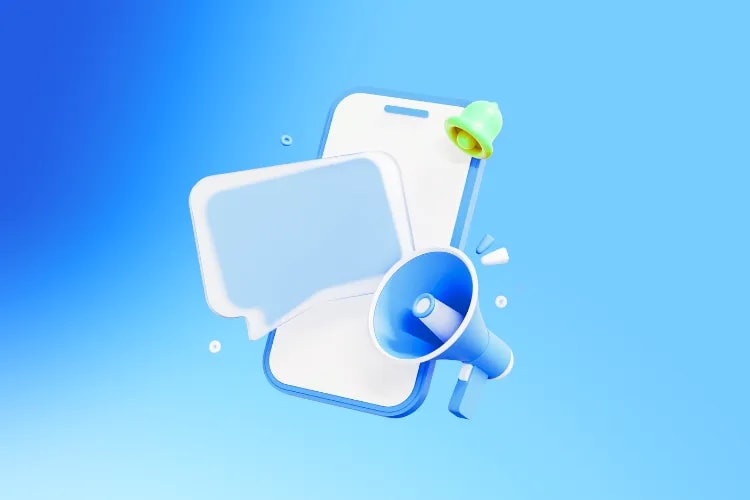
If your budget feels tight but your ideas are big, small businesses are your secret weapon. Learning how to pitch to small businesses to sponsor your event is one of the highest-ROI skills you can build as an event creator.
When sponsorship is done right, it is not just a logo on a banner. You get funding, in-kind support, and extra marketing power. They get real access to your attendees, more local credibility, and a chance to be the hero for their community.
Big brands are nice, but local sponsors can be faster to decide, easier to talk to, and more loyal if you treat them well. And there are a lot of them. In the U.S. alone, there are more than 36 million small businesses, employing almost half of private‑sector workers. (Source) That is a massive sponsorship pool.
This guide walks you through, step by step, how to pitch to small businesses to sponsor your event: how to understand what they care about, where to find them, what to put in your proposal, how to reach out, and how to turn one‑off deals into long‑term partnerships.
If you pitch small businesses like they are Fortune 500 brands, you will lose them fast. Their reality is different, and your pitch should respect that.
Typical small-business traits:
Limited budgets: Every euro or dollar has to prove itself. They cannot gamble on fuzzy benefits.
Local focus: They usually serve a city, neighbourhood, or narrow region. Wide, unfocused reach is not attractive; targeted local reach is.
Lean teams: Many owners are the marketer, salesperson, and HR all in one. Your sponsorship has to be simple to understand and easy to activate.
Community-driven: Their customers care that they are local. Supporting community events is a brand move, not just a nice gesture.
So what do these businesses usually want from sponsoring your event?
Common small-business sponsorship goals:
Brand awareness in a tight radius: More locals recognising their name, shop, or logo.
The Loopyah Content Team shares expert insights, practical guides, and industry updates to help event organizers create unforgettable experiences and stay ahead in the event planning world.
selling
Customer acquisition: Email leads, QR scans, vouchers used, or trial signups they can track after your event.
Reputation and trust: Being seen as the business that supports music, sports, culture, or local causes.
Content and storytelling: Photos, videos, and social proof they can reuse all year.
Staff pride and perks: Tickets or VIP access they can give to employees and favourite customers.
Your job is to position your event as the shortest path between their business and those goals.
This is where alignment matters. For example, Loopyah's Event Attendee US 2025–2026 report shows that 60.8% of surveyed event goers say concerts or festivals are the events they attend most often, and 51.4% say sports. If you run local gigs or sports events, a nearby bar, restaurant, gym, or apparel shop will instantly see the fit.
Sponsor decisions from small businesses are emotional and practical: they want to feel good supporting the community, but they also need clear, local business impact.
Spray-and-pray emails saying 'Dear Sir/Madam, would you like to sponsor our event?' belong in the bin. Targeted outreach saves your time and earns you respect.
Here is how to build a solid list of potential small-business sponsors that actually make sense for your event.
Start with your attendees, not with businesses. Ask yourself:
Who comes to this event? Age, income range, interests, typical weekend habits.
Where do they live or work? Are they hyper-local or travelling in?
What are they already spending money on before or after events? Food, drinks, transport, fitness, style, tech?
From Loopyah's attendee study, 46% of respondents will travel up to two hours for an event, and 30% will go to a different city in the same country. That means your potential sponsor pool is usually wider than just the street your venue is on.
Once you know who attends, find small businesses that want to reach that same crowd. Start with:
Local Chamber of Commerce directories: These are goldmines of vetted local businesses grouped by category. Many chambers actively encourage members to support local events.
Neighbourhood business associations and BID websites: Look for retailers, cafés, gyms, salons, real‑estate agents, clinics, and agencies.
Google Maps and review sites: Search your area for categories that fit your theme: 'vegan restaurant near [venue]', 'sports physio [city]', 'tattoo studio [neighbourhood]'.
Event history: Who has sponsored similar events or venues near you? They already understand the value of event marketing.
Before you pitch, spend 5–10 minutes looking each business up so your email sounds like a human wrote it, not a robot.
Check:
Website: What do they highlight? Family-friendly? Luxury? Health-first? Discounts? This signals what they value and how they talk to customers.
Social media: Are they running any current promos? Collaborations? Charity drives? These can line up with your event story.
Google Business Profile and reviews: Do customers praise them for community work, great service, or specific products? Mention it in your pitch.
Past sponsorships or partnerships: Search their name plus 'sponsor', 'partner', or 'event'.
Take light notes: what they sell, who their customers seem to be, and one line about why your event looks like a match. You will use that later to personalise your proposal.
Your sponsorship proposal is not a brochure. It is a sales document. It needs to quickly answer a small-business owner's unspoken questions:
'Is this event real and well organised?'
'Are these my people?'
'What exactly do I get, and what does it cost?'
'How will I know if this worked?'
Include these essentials in every sponsorship deck or PDF you send:
Event overview: Keep it clear and punchy.
Event name and tagline
Date, time, and location
Short description: what it is, who it is for, and why it exists
Audience demographics and reach: Prove that your event reaches the people they care about.
Expected attendance and type of attendees (students, young professionals, families, etc.)
Location radius (locals vs out-of-town visitors)
Social and email reach: followers, subscribers, average engagement
Sponsorship levels and benefits: Offer a few clear options, not 12 confusing ones.
For small businesses, you might include:
Local Hero (premium): Main stage or field signage, logo on all promo, speaking shoutout, stall/booth, lead capture activation.
Community Partner (mid): Logo on key materials, social shoutouts, inclusion in email, small activation or sampling station.
Supporting Sponsor (entry): Logo on-site, mention on website and one email, a handful of complimentary tickets.
If you want to go deeper on package design and pricing, pair this with our guides on building event sponsorship packages and how to write a sponsorship letter.
Marketing and promotional opportunities: Spell out exactly how you will promote them.
Number of social posts (and platforms) featuring them
Inclusion in email campaigns and newsletters
On-site mentions from MC or hosts
Branding presence: banners, photo backdrops, bar wraps, seat covers, or digital screens
Proof and simple measurement: Even a basic plan goes a long way.
Explain how you will measure success for them, for example:
Number of leads or scans collected at their stand
Unique QR codes or discount codes redeemed after the event
Social reach of content mentioning them (reels, photos, stories)
Clear call to action: Tell them what you want them to do next and by when.
For example: 'If this looks like a fit, I would love to hold the Community Partner slot for you. Can we grab a 20‑minute call next week to walk through the details?'
Well-structured proposals perform better because they feel less risky. According to Nielsen Sports, brands that treat sponsorship as a measurable, full‑funnel channel rather than a logo placement see stronger long‑term returns on sales and brand metrics. (Source)
You can adapt this simple structure directly into a one‑pager or slide deck:
Cover page: Event name, logo, date, your contact details, and a line that says 'Sponsorship proposal for [Business Name]'.
Page 1 – Event snapshot: Short description, who attends, expected numbers, location, and why the event exists.
Page 2 – Your audience: Demographics, interests, and how they discover and decide on events. You can enrich this with insights from Loopyah's attendee research on social discovery and purchase timing if it matches your crowd.
Page 3 – Sponsorship options: Table of 2–4 packages with investment level, key benefits, and availability (for example: '2 Local Hero slots only').
Page 4 – Activation ideas: Visual examples of what their presence could look like on-site and on social (sampling station, selfie wall, challenge, contest, etc.).
Page 5 – Next steps: Clear ask, decision deadline, and your direct contact details (phone, email, WhatsApp).
If you also want your sponsorships to tie into your overall event marketing, read our guide on creating high-converting event landing pages. A strong landing page makes your event easier to sell to both attendees and sponsors.
A generic proposal can get you a meeting. A personalised pitch gets you a yes.
Use the research you did earlier to tailor your message.
In your email or intro message, reference something specific you noticed:
'I saw your Saturday brunch posts are getting a lot of comments from students. Our event is 70% students from campuses within 3 km — I think there is a natural fit here.'
'You recently ran a campaign supporting local animal shelters. Our festival is raising money for the same shelter, so your brand story would land really well with attendees.'
Never assume they will connect the dots on why a benefit matters. Spell it out from their point of view.
Feature: 'Your logo on all event emails.' Benefit: 'Your brand in front of 2,000 locals at least three times before event day, with zero extra work for you.'
Feature: 'A QR code on the main screen.' Benefit: 'An easy way for attendees to join your loyalty programme or claim an offer while they are already in a good mood.'
This is especially powerful when your event data backs you up. For example, if you know from past events that 65% of your audience discovered you via Instagram and TikTok (in line with Loopyah's data on social media discovery), a sponsor focused on social reach will pay attention.
Now you have your research and proposal, it is time to actually talk to people.
Choose the right first touch based on the size and style of the business:
Email: Best for slightly larger small businesses (multi-location, clear marketing contact) or when you were given a specific address to use.
Phone call: Perfect for owner‑operated shops, gyms, cafés. Call outside of rush hours and ask for a few minutes or a better time to call back.
In‑person visit: Strong for hyper-local partnerships, but only if you are respectful about their busy times. Bring a one‑pager, not a 30‑page deck.
Keep it short, specific, and friendly. For example:
Subject: Quick local collab idea for [Business Name] and [Event Name]
Hi [Name],
I am organising [Event Name], a [short description: for example: one‑day music and food festival] at [venue] on [date]. We are expecting around [X] attendees, mostly [describe key audience: for example: young professionals living within 5 km].
I am reaching out because [personalised reason: for example: your weekend brunch crowd looks a lot like our audience, and I love that you support local artists]. I think there is a simple way we could work together that brings more locals through your doors and puts your brand at the centre of the experience.
Could I send you a 1‑page overview and, if it looks interesting, grab a 15‑minute call next week to walk through options?
Thanks for considering,
[Your Name]
When you call, your aim is not to sell the sponsorship on the spot. It is to get permission to send details and set a follow‑up.
Hi, is this [Name]? Great. I will be quick because I know you are busy.
I am [Your Name], I run [Event Name] happening at [venue] on [date]. We bring in around [X] locals, mostly [audience type]. I think our attendees line up really well with your customers, and I would love to send you a 1‑page idea for a simple sponsorship that could drive more of them your way.
Would it be okay if I email that to you and then call back next week to see what you think?
If they say yes, confirm their email address, send the proposal promptly, and note the follow‑up date immediately.
You will often hear nothing after the first email. Do not take it personally. Small-business owners are juggling staff, inventory, and customers all day.
Plan for at least two follow‑ups per prospect before you park the conversation.
Roughly 3–5 days after sending your proposal:
Subject: Quick follow‑up: [Event Name] x [Business Name]
Hi [Name],
Just checking in on the sponsorship idea I sent over for [Event Name]. I know you have a lot on your plate, so I pulled out the key bit:
- Estimated [X] locals, mostly [audience type]
- Investment of [amount] for [headline benefits]
If this looks interesting, would you be open to a short call next week to tweak the package so it fits your goals and budget?
Thanks again,
[Your Name]
Expect pushback. It is normal. Common objections:
'It is too expensive.' Respond with options: strip out non‑essential items, offer an entry-level package, or move some benefits to in‑kind support instead of cash.
'We are not sure it will work.' Reduce risk: add a clear measurement plan, offer a first‑time sponsor discount, or include a simple guarantee (for example: priority slot for next year if targets are not hit).
'The timing is bad.' Offer a smaller test package this year with the option to expand next year, or suggest a different event in your calendar that might be a better fit.
When you make concessions, label them: 'Normally this package is X, but for first‑time local partners I can do Y if we confirm by [date].' It shows that your pricing is intentional and that you are meeting them halfway.
Long term, your aim is not just one sponsorship. It is a roster of partners who come back every year. That only happens if you make them feel heard and deliver on what you promise next.
Once a small business says yes, the real work starts. You are now responsible for a piece of their marketing budget. Treat it with respect.
Send each sponsor a simple checklist that covers:
Final package summary and timeline (when posts, emails, and on-site shoutouts will happen)
What you need from them: logos, brand colours, social handles, tracking links, physical materials
Any legal or disclosure requirements (for example, marking social posts as sponsored if you or your influencers promote them)
Use tools that make communication easier. If you are already running your registrations and ticketing through Loopyah, you can also email event attendees directly from the platform to deliver sponsor messages in a structured, trackable way.
On event day, sponsors are watching. Hit the basics:
Their signage is where you said it would be, visible and not hidden behind something else.
MCs actually say the agreed sponsor mentions, correctly pronounced, at the agreed times.
Their booth or activation has enough space, power, and support.
Loopyah's research shows that overcrowding and poor communication are top negative experiences for event goers. If you keep flows smooth and information clear, your sponsors benefit too: attendees are calmer, stay longer, and engage more.
Within 1–2 weeks, send each sponsor a short, visual report. It does not have to be a 30‑page brand study. One or two pages is enough if it answers:
How many people attended and basic breakdown (age range, local vs visitors).
Which deliverables you fulfilled (number of posts, email inclusions, on-site mentions).
Any tracked results: QR scans, leads collected, codes redeemed, social engagement, photo examples.
Close with options for next time: early‑bird renewal pricing, priority placement, or ideas for a bigger activation. Sponsors renew when they can see what they got and what they could get next.
Let us ground this in reality. Here are a few simple but powerful ways small businesses have sponsored events without huge budgets.
A regional fundraising day invited local restaurants and bars to donate a percentage of sales on a specific date to a local nonprofit. The event organisers provided:
Unified branding: posters, table tents, and social graphics for all venues.
Central promotion: a shared landing page listing all participating spots and pushing traffic out to each venue.
Local PR: press releases to local media highlighting that small businesses were leading the fundraising effort.
For the restaurants, this ticked every box: community impact, new customers walking in, and media coverage they could never buy on their own. For the organiser, it meant dozens of local sponsors and built‑in promotion because each venue pushed the event to its own followers.
A local coffee roaster teamed up with an espresso machine company to host a latte‑art throwdown. The budget was tiny. The impact was not.
What made it work:
Clear audience fit: baristas, coffee nerds, and foodies who care deeply about the craft and the gear.
Built-in content: dramatic pours, crowd reactions, and winner photos made for addictive social clips.
Simple mechanics: entry fees, small prizes from the equipment brand, plus product sampling.
The roaster got a packed shop and loyal fans. The equipment brand got product in front of its exact buyers without paying for a trade show booth. The organisers gained a repeatable event format they can run annually or for different sponsors.
Many professional associations now break big sponsorships into smaller, plug‑and‑play pieces: coffee breaks, name badges, lanyards, charging stations, or specific workshop rooms. This model is perfect for small businesses because:
Entry price is low: they can sponsor a specific element instead of the whole event.
Benefits are crystal clear: 'Your logo on every name badge and registration email' is easy to value.
Renewal is natural: if it works, the same business can own that element year after year.
You can use the same modular approach even for concerts or community festivals: think water stations, photo booths, kids zones, chill‑out lounges, or transport shuttles. Each can have its own small-business hero.
If you want to level up how you design and manage your whole event strategy (including sponsorship), take a look at our guide on strategic event management. It will help you slot sponsorship into the bigger picture rather than treat it as an afterthought.
Learning how to pitch to small businesses to sponsor your event is not about having the flashiest deck. It is about fit, clarity, and follow‑through.
Fit: Approach businesses whose ideal customers already attend your event or live in your event's radius.
Clarity: Show them a simple path from sponsorship to real outcomes: foot traffic, leads, sales, and reputation.
Follow‑through: Deliver exactly what you promise, measure it, and report it back quickly.
Start with a shortlist of 10–20 small businesses around your next event. Build a one‑page proposal, personalise each outreach, and treat every new sponsor like a long‑term partner from day one.
And if you want ticketing and promotion tools that make your event easier to sell to both sponsors and attendees, you can run the whole journey on Loopyah's event ticketing platform.

selling









selling
selling
planning
marketing
marketing
planning
selling
growth
selling